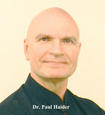Akebia fruit is found in Japan, Korea, and China and has many great health benefits including being a good anti-inflammatory agent, helps with arthritis, and it’s a great diuretic.
Where it Grows – Akebia Quinata plants grow in Japan, China, and Korea and all over Asia in general. It’s ground cover and climber, it grows very fast and has purple flowers that are beautiful with green leaves. And sometimes bears a small purple fruit with a purple skin like an eggplant. And the leaves are 5 small leaflets to a bunch. This fruit is very common in the Tohoku area of Japan.
Other Names – Akebia Quinata is also known as Chocolate Vine, Mu Tong, and a few other common names.
Parts Used – The stems, fruit, and roots can all be used.
Anti-inflammatory – Akebia Quinata is a very good anti-inflammatory agent which helps with arthritis, joint pain, back pain, lumbago swelling, and redness.
Induces Menstruation – This herb also helps to bring about monthly periods thus regulating menstruation.
Powerful Diuretic – Akebia Quinata is a very good diuretic which helps with water retention and urinary challenges.
Great for Headaches – Akebia Quinata also helps with headaches and migraines when taken as a tea.
Anti-tumor Agent – New studies are being done about using Akebia Quinata for the treatment of breast and digestive tract tumors.
Helps with Weakness – Akebia Quinata also helps with general feelings of weakness helping to strengthen the body in general.
Inflamed Kidneys and Stomach – Akebia Quinata is a great agent for soothing away irritations of the stomach and kidneys thus helping to prevent further disease.
Great for the Liver – Being a good anti-inflammatory agent Akebia Quinata also helps to detox and soothe the liver.
Antibiotic – Akebia Quinata is also a good antibiotic herb for getting rid of bacterial infections.
High in Potassium – Akebia Quinata is also high in potassium for good heart contractions and water regulation.
Lowers Fevers – Akebia Quinata roots can be made into a tea that works well for lowering fevers.
Powerful Pain Reliever – The dried stems made into a tea is a very good for getting rid of pain.
Mouth Sores – Akebia Quinata used as a tea is also great for treating mouth irritation and sores.
Painful Urinary Infections – Akebia Quinata also works well for getting rid of painful urinary tract infections.
Increases Circulation – Akebia Quinata increases circulation to all parts of the body including the heart.
Helps with Skin Challenges – This herb also works well for skin rashes, irritations, and pain and swelling of the skin.
Used in Traditional Chinese Medicine – Akebia Quinata has been used for hundreds of years in Traditional Chinese Medicine. In TCM Akebia Quinata drains dampness and regulates water in the body.
Taste – Akebia Quinata tastes like pear with an even more mellow flavor… and has a gelatinous inner area around the seeds. The seeds can be removed or cooked and eaten.
Fruits or Seed Pods Used in Cooking – Akebia Quinata has gelatinous flesh and it is used like any other veggie. It can be fried, simmered, used in soups, stews, and even stuffed.
Forms – Akebia Quinata can be found as fresh plants, whole dried herb, powders, and capsules.
Finding – Akebia Quinata plants can be found online on Amazon and eBay and the dried herb. And if you google “Buy Akebia Quinata Herb” lots of places online that sell this herb will come up.
Dose – The lowest dose possible should be used and no more than 9 grams daily.
Side Effects – Akebia Quinata is toxic in large doses and should only be used for 7 to 10 days. But this wonderful herb has been used safely in TCM for hundreds of years. But as always those who are pregnant, nursing, and small children should not use Akebia Quinata.
Try Akebia Quinata Herb and Grow it in Your Yard.
Many Blessings to Everyone!
Dr. Paul Haider – Master Herbalist
Feel Free to Share - This information is meant to get you started so you can do more research on your own… dig a little deeper and find what works for you. This article is for educational purposes only, I strongly recommend that you seek advice from your own GP, private doctor, or medical specialist for any ailment, illness, or medical condition.. this article not meant to be a scientific analysis in any way, shape, or form.
Dr. Paul Haider – Master Herbalist and Spiritual Teacher for over 25 years, helping people to recover and feel healthy. You can also find Dr. Haider on FB under Dr. Paul Haider, Healing Herbs, and at www.paulhaider.com – feel free to connect with him anytime.
Here is a short video bio - http://www.youtube.com/watch?v=rK6Eg-xlX3U
Check out my website at www.paulhaider.com
Feel Free to Share - This information is meant to get you started so you can do more research on your own… dig a little deeper and find what works for you. This article is for educational purposes only, I strongly recommend that you seek advice from your own GP, private doctor, or medical specialist for any ailment, illness, or medical condition.. this article not meant to be a scientific analysis in any way, shape, or form.
Dr. Paul Haider – Master Herbalist and Spiritual Teacher for over 25 years, helping people to recover and feel healthy. You can also find Dr. Haider on FB under Dr. Paul Haider, Healing Herbs, and at www.paulhaider.com – feel free to connect with him anytime.
Here is a short video bio - http://www.youtube.com/watch?v=rK6Eg-xlX3U
Check out my website at www.paulhaider.com

Post new comment
Please Register or Login to post new comment.